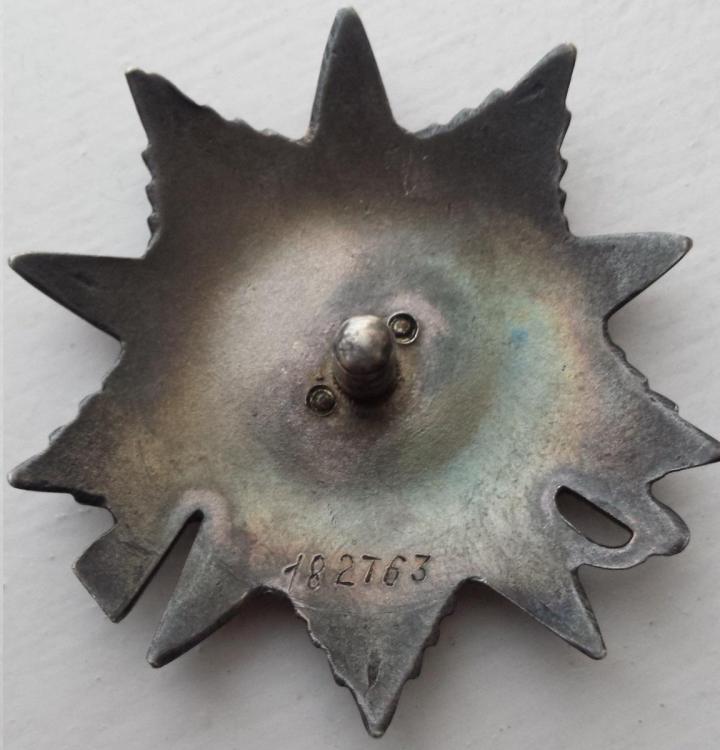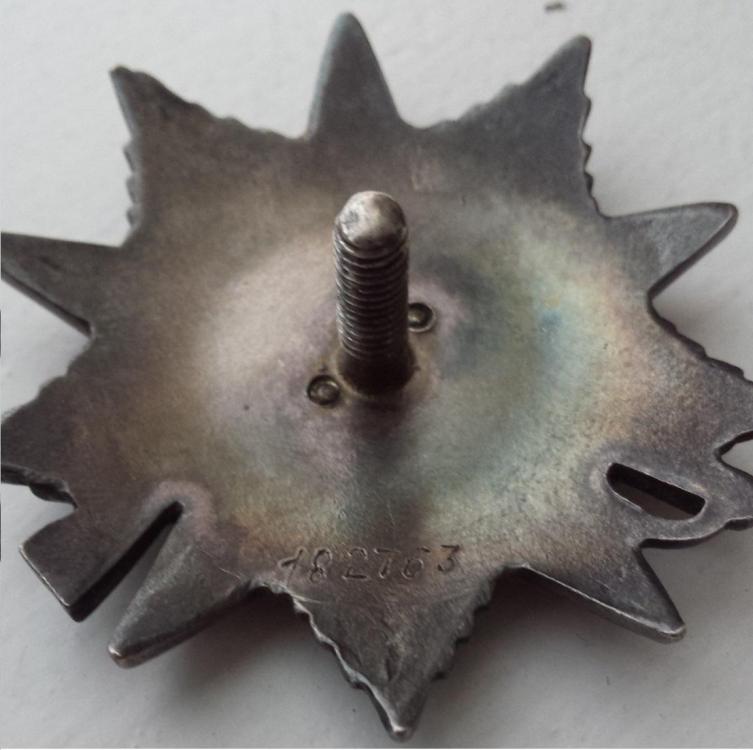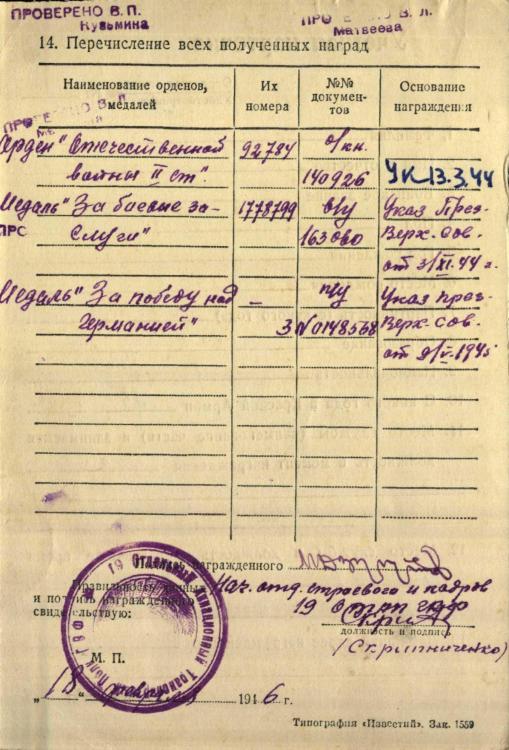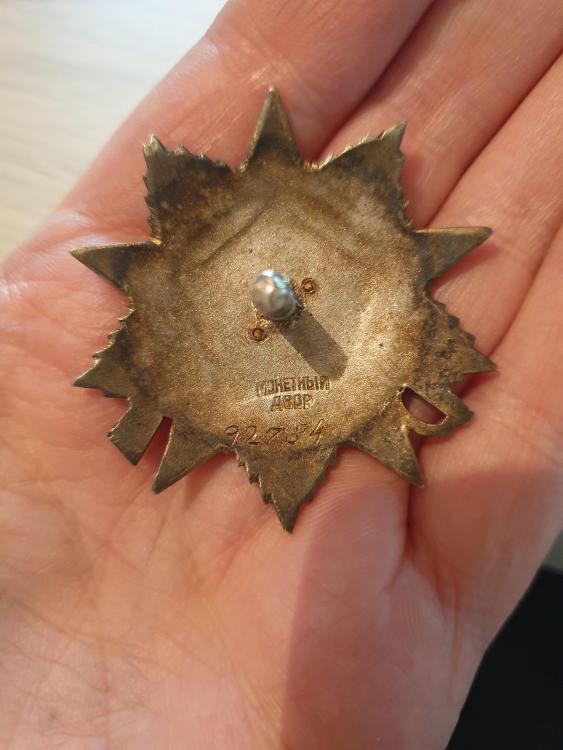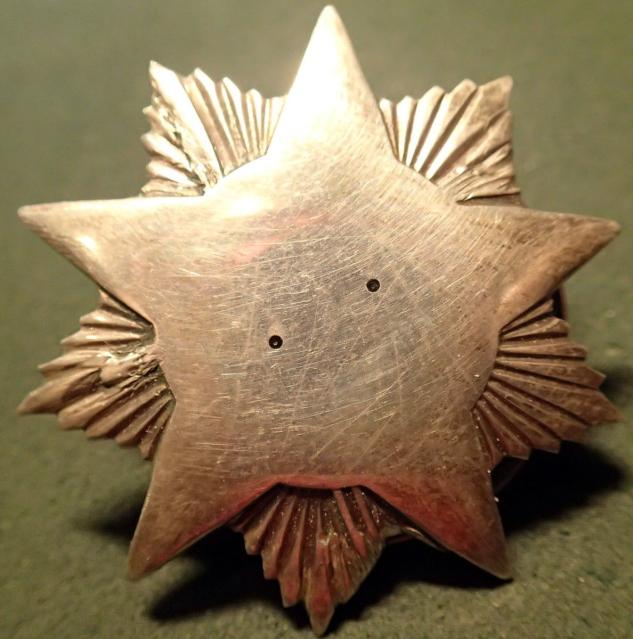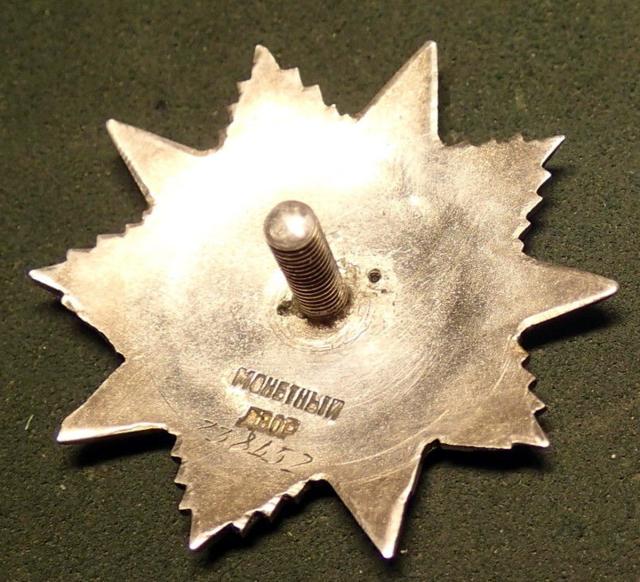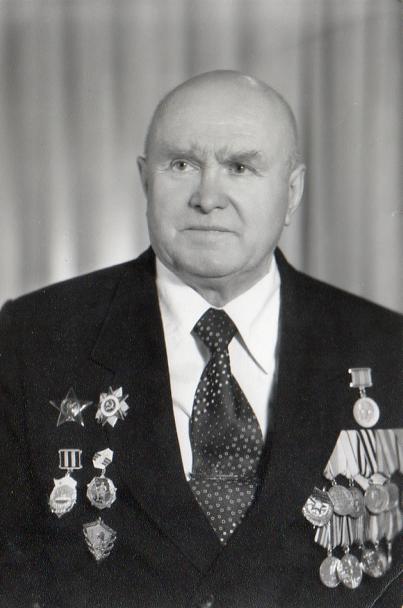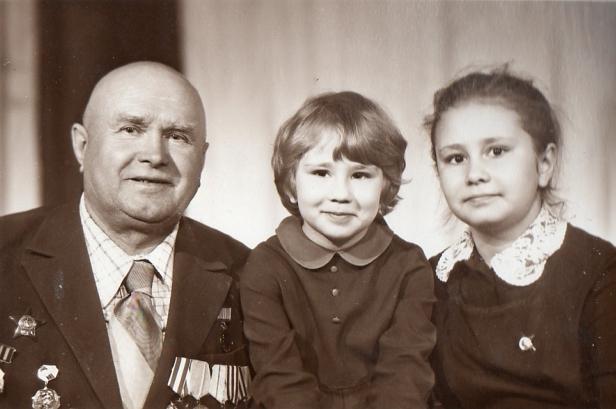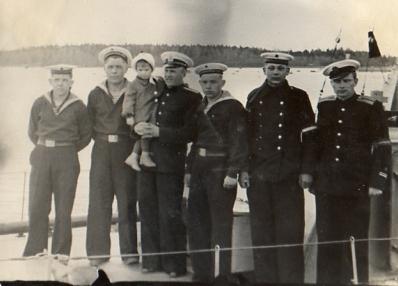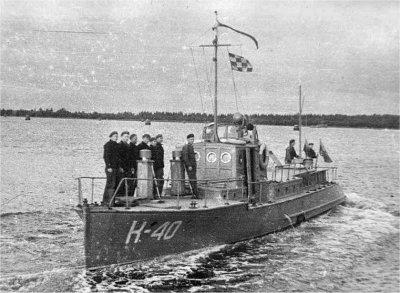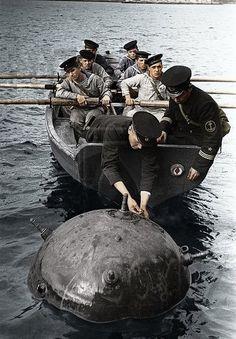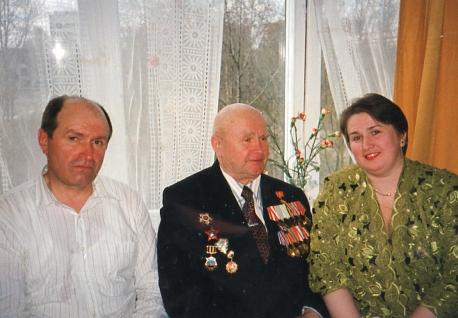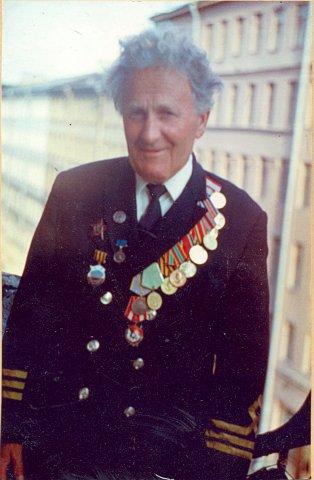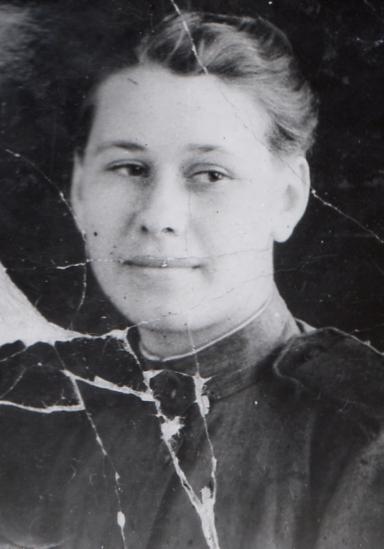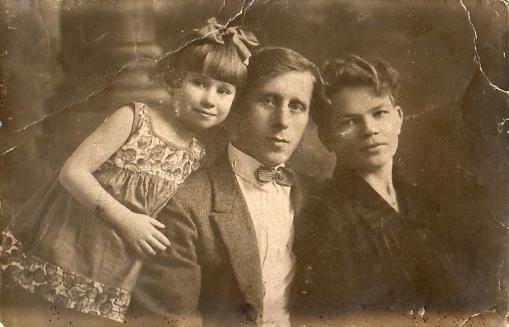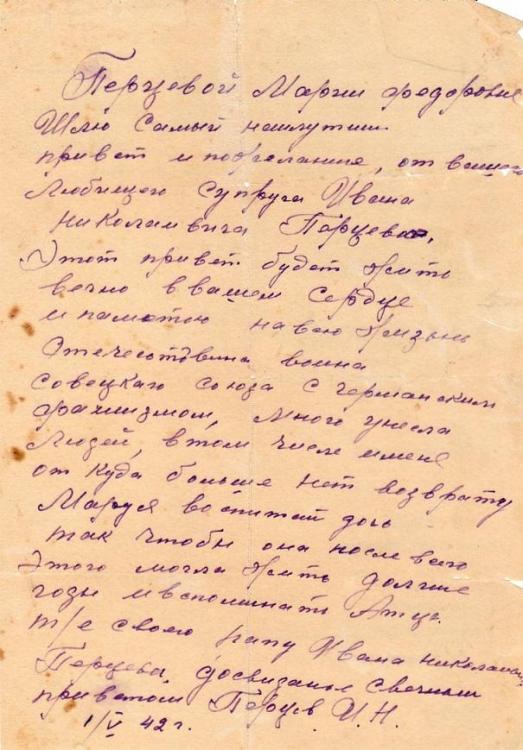-
Posts
96 -
Joined
-
Last visited
-
Days Won
1
Content Type
Profiles
Forums
Blogs
Gallery
Events
Store
Everything posted by redoctober
-
Guards Captain Fedor Pavlovich Dobrolovsky Senior Investigator - SMERSH - 9th Guards Rifle Division Award Card Order Booklet B 803052 Last name: Dobrovolsky Name and patrionymic: Fedor Pavlovich Rank: Guards Captain Gender: Male Birthyear: 1919 Birthplace: Vitebsk Oblast, Beshenkovichy District, Village of Khotensky, Bogryatsy Homestead Party membership: since March 1942 Education: Mid-level Nationality: Belorussian Time in Red Army: Since 11.1939 Place of service at awarding: Counter-Intelligence Section of the MGB, 9th Guards Rifle Division, Senior Investigator Place of work at present: Counter-Intelligence Section of the MGB, 71st Guards Rifle Division, Senior Investigator Home address: Vitebsk Oblast, Beshenkovsky District, Villlage of Khotensky, Bogryatsky Homestead Awards: Designation Serial Number Document Number Awarding Organization Red Star 1467702 Temporary Cert Zh298863 Decree of 6th Guards Army, 202/N 24.4.44 Patriotic War II 482172 Temporary Cert Zh309089 Decree of 6th Guards Army, 458/N 30.5.45 For the Defense of Moscow Cert Kh039499 Decree of 1.5.44 For Victory Over Germany Cert Zh0040445 Decree of 9.5.45 Verified by Chief of Staff of the 71st Guards Rifle Division, Guards Major Mazulin in August 1946 Award Sheet Last name, name, and patrionymic: Dobrovolsky, Fedor Pavlovich Rank: Guards Captain Duty position: Senior Investigator, Counter-Intelligence Section "SMERSH" 9th Guards Rifle Division Recommendation for the Order of the Patriotic War II Class Born: 1919 Nationality: Belorussian In Red Army: since 1937 Party membership: since March 1942, Party No.4550734 Previous combat: Since 1.41 on the Western Front, Since 1.44 of the 1st Baltic Front and 2.45 2nd Baltic and Leningrad Fronts Wounds or shell-shock: None Time in the Red Army: Since November 1939 Inducted by: Beshenkovichsky Region Millitary Commissariat, Vitebsk Oblast Previous Awards: Order of the Red Star by Military Council of the 39th Army, Decree 0270 of 12.1943 Home of record: [trans: entry intentionally obscured] Short description of personal combat feat or accomplishment Comrade Dobrovolsky in the position of Senior Investigator in the SMERSH on of the 9th Guards Rifle Division has been serving since September 1944 and before that worked in the Counter-Intelligence Section SMERSH of the 6th Guards Army. During the period of service in the Counter-Intelligence Section "SMERSH" of the 9th Guards Rifle Division, Comrade Dobrovolsky showed himself only in a positive manner, disciplined and attentive. While working as Senior Invetigator, Comrade Dobrovolsky, despite the difficulties of his work, regardless of the time did a great job of exposing persons held criminally liable for anti-Soviet activities according to the norms of the Criminal Code and Criminal Procedure Code of the RSFSR. There were no cases of violation of the Criminal Procedure Code in this regard. At the same time, comrade Dobrovolsky did a lot of work to filter out the detained military personnel, among whom he exposed a number of persons who had committed desertion, self-mutilation and other hostile actions. In addition to this, Comrade Dobrovolsky exposed several German accomplices among the civilian population. For exemplary service, good performance in investigative work to expose hostile elements, comrade Dobrovolsky deserves to be awarded the Order of the Patriotic War 2nd Class. Signed Temporary Chief of the Counter-Intelligence Section "SMERSH" of the 9th Guards Rifle Division - Guards Captain Salovaev Deserving of the award the Order of the Patriotic War 2nd Class. Commander of the 9th Guards Rifle Division, Guards Colonel Bauyrshan Momyshuly Agreed - Deserving of the award the Order of the Patriotic War 2nd Class. Chief of the Counter-Intelligence Section "SMERSH" of the 2nd Guard Rifle Corps, Guards Lieutenant Colonel V. Kornitsky Deserving of the award the Order of the Patriotic War 2nd Class. Commander of the 2nd Guards Rifle Corps, Hero of the Soviet Union Guards General Major Baksov. Deserving of the award the Order of the Patriotic War 2nd Class. Chief of Counter-Intelligence Section "SMERSH" of the 6th Guards Army, Guards General Major N. Khandozhko 22nd May 1945
- 1 reply
-
2
-

Badge: Готов к ПВХО - Осоавиахим СССР
redoctober replied to Tupper's topic in Russia: Soviet Orders, Medals & Decorations
The Osoaviakhim and "Ready for Medal Defence" chain badges are some of my favourites. -

Soviet Mint marks identification
redoctober replied to Neil74's topic in Russia: Soviet Orders, Medals & Decorations
1. (SFS) Moscow Factory of Sports Signs. Also shown as ZFS and ZSZ through various renamings. http://gerbowiki.ru/wiki/GerboWiki:Клейма/5 The above wiki has a pretty comprehensive list http://phalera.ru/ru/manufacturer/index?country=1 This website also lists factories by location and each page shows details of their known marks. Picture of the full obverse and reverse could also help tracking down the manufacturers -
Thank you, it's one of my favourite things in my collection. As for why it's so damaged, I honestly have no clue. I have no pictures of him post-war that show his awards, so it's impossible to say if this was lost on his "Glorious path of combat", or whether one of his children/grandchildren were playing with his medals and lost in a field where it got ran-over by a tractor! I bought it Unresearched from someone who had no backstory about it, so I guess it will remain a mystery ?
-
Here is one of my favourite awards I own. There is something special about damaged and destroyed awards that makes me treasure them that little bit more. Aleksandr Kuz'mich Bezyazykov Rifle Battalion Commander - Stalingrad Aleksandr Bezyazykov was born in 1916 in Krasnodar Krai. He enlisted in the Red Army in 1937 and saw combat at Lake Khasan. He was injured twice during the Great Patriotic War, and still he fought bravely from 1941 to 1945. Record card Order booklet nr. A-105052 1. Last name: Bezyazykov 2. First name and patronymic: Aleksandr Kuzmich 3. Military rank: Major 4. Sex: Male 5. Year of birth: 1916 6. Place of birth: Krasnodar Krai, Novosibirsk Area 7. Party membership (since which year): Since April 1944 8. Education: Average 9. Nationality: Russian 10. Since which year in the Red Army: 1937-1946 11. Place of service (name of the unit) and position occupied at the time of the award: 121st Rifle Division, Chief of Staff for the 524th Rifle Regiment 12. Current place of service and position: Azti Deputy Chief of Staff 13. Home address of the awardee: Center No.24 Apartment 2 14. Record of all awards received: Name of the order or medal Serial number Number of the document Ground of award Red Star 65100 Order Booklet N105052 Decree of the South-western Front No.010/N of 26.09.1942 Order of the Patriotic War 2nd Class 58668 Temp. Cert N.492606 Decree of the 60th Army No.072/N of 19.8.1943 Order of Suvorov 3rd Class 8787 Temp Cert N.347555 Decree of the 1st Ukrainian Front of 24.11.1943 No.0225/N Signature of the awardee: [signed] I confirm the correctness of the data and the signature of the awardee (position and signature): Military commissar of the Frunze region Major / [signed] / Budashirov 28th August 1946 Award sheet Last name, first name and patronymic: Bezyazykov, Aleksandr Kuz’mich Rank: Senior Lieutenant Position and unit: Commander of the 2nd Rifle Battalion, 285th Rifle Regiment, 112th Rifle Division Nominated for: Order of the Red Star 1. Year of birth: 1916 2. Nationality: Russian 3. Since when in the Red Army: Since 1937 4. Party membership: Not a member 5. Participation in combat (where and when): Lake Khasan in 1938. Patriotic War from 23.6 to 15.9.1941 on the Western Front and South-Western Front in a Machine Gun Platoon in the 587th Rifle Regiment, 190th Rifle Division. Since 25.7.1942 commander of a Rifle Battalion in the 385th Rifle Regiment, 112nd Rifle Division 6. Wounds and Contusions: Wounded 15.9.1941 and 28.7.1942 7. Awards received previously (for which merits): None 8. Inducted by which Regional Millitary Commissariat: Career Officer 9. Permanent home address of the prospective awardee and the address of his family: ______________ Short, concrete description of his combat feat or merits Comrade Bezyazykov, Alexander Kuzmich has proved himself during the battles with German invaders as steadfast and knowledgeable in his role as commander. During the Great Patriotic War comrade Bezyazykov whilst commander of the 2nd Rifle Battalion has led his battalion into combat and achieved victory over the enemy. On July 27th Comrade Bezyazykov's battalion was ordered to mount a night attack on Chir station. Comrade Bezyazykov took Chir Station and with it struck a huge blow on the enemy. From the 2nd to the 7th September, the battalion served in the defence of the area of Gumrak station and the Stalingrad Experimental Station. Despite the fact that the Hitlerites had undertaken their attack with a whole regiment, Bezyazykov, with only a handful of brave men prevailed and all of the enemy’s attacks were repulsed. On 05.09.42 a company of Hitlerites attacked Bezyazykov’s battalions’ position with whom they engaged and the attack was repulsed. The battalion destroyed 2 tanks, 3 vehicles, 1 mortar battery and up to 15 stockpiles of ammunition. On 06.09.42 the Hitlerites mounted a second offensive on Bezyazykov's position from the right flank. In great danger, sensing their plight, he himself led his battalion in the counter-attack and the Hitlerites attack was fully repulsed. The Germans lost 600 soldiers and officers, and abandoned their attempt to break through the front in the area defended by Bezyazykovs battalion. For his bravery and courage he is worthy of submission for the government award – the Order of the Red Star. 11.09.1942 Commander of the 385th Rifle Regiment Senior Lieutenant / [signed] / Balujko Millitary Commissar of the 385th Rifle Regiment Senior Commander / [signed] / Chumak
-
Here is an interesting Order of the Red Star awarded by decree in 1942 to Nikolai Semyenovich Gershon. By the time the Order was given out in 1986, he had changed his name to Nikolai Semyenovich Mikhlin. It's interesting to see that an award in the range of 3,700,000 was awarded by decree in December 1942. Mikhlin was living in Leningrad at the time his award was finally presented to him, not out in the wilderness, so his name change must have been the reason it took so long to get to him. Anyway, onto the research... Nikolai Semyenovich Mikhlin Sniper Squad Leader - 3rd Guards Motorized Rifle Division Award Card 3 November 1986, RSFSR, Leningrad, Kyibyshev Regional Military Commissariat 1. Last name: Mikhlin 2. Name and patrionymic: Nikolai Semenovich 3. Nationality: Russian 4. Gender: Male 5. Birthyear: 1921 6. Birthplace: Shklov, Mogilev Oblast 7. Party membership: n/a 8. Education: mid-level 9. Military rank: Guards sergeant (reserves) 10. Time in Red Army: 05.1940-06.1945 11. Place of service at awarding: Sniper Squad Leader – 3 Guards Motorized Rifle Division 12. Place of work at present: “Kontakt 4” – welder/instrumental technician 13. Home address: Leningrad, Rubinshtein St. Bldg. 26, Apt. 11 14. Awards: Designation Serial Number Awarding Organization Red Star 3.766.117 5 Army dated 4 December 1942 Verified by Kyibyshev Regional Military Commissariat Colonel A.A. Yushchenko on 03 November 1986 Award Sheet 1. Last name, name, and patrionymic: Gershon, Nikolai Semenovich 2. Rank: Guards Sergeant 3. Duty position: Sniper Squad Leader – Blocking Battalion, 3 Guards Motorized Rifle Division Recommendation for the Order of the Red Star 4. Born: 1921 5. Nationality: Russian 6. In Red Army: since 1940 7. Party membership: Comsomol member 8. Previous combat: Western Front, Karmanov Region, Smolensk Oblast August-October 1942 9. Wounds or shell-shock: n/a 10. Previous awards: n/a 11. Inducted by: Kalinin Regional Military Commissariat, Leningrad 12. Home of record: Leningrad, Mezhdunarodnii Prospekt Bldg. 711, Apt. 34 Short description of personal combat feat or accomplishment He has operated as a sniper squad leader since 5.9.42 on our defense’s lead edge near Kostino, Karmanov Region, Smolensk Oblast. By his personal example he has motivated his squad’s soldiers to destroy the enemy, which as a result his sniper squad has destroyed 239 fascist invaders from 5.9.42 to 7.10.42, of which Gershon personally killed 39. Prior to entering into combat Comrade Gershon applied full zeal to train his squad in the skill of sniper shooting and trained brave, accurate riflemen for action in combat. Signed Blocking Battalion Commander Guards Captain Mironov and Guards Politruk Alfimov on 8 October 1942 Endorsed Commander, 3 Guards Motorized Rifle Division, Guards Lieutenant Colonel Vochkov on 14.10.1942 Endorsed 5 Army Deputy Commander General-Lieutenant Fod(?)nskii and Division Commissar Ivanov on 31 October 1942
-
Captain Afanasiya Kondrat'evich Lysko Investigative officer of the Special Section of the NKVD, 256th Rifle Division On July 20, 1941, he was sent to the Moscow-Sofrino formation point, where he was appointed commander of a machine-gun company of the 256th rifle division of the 930th regiment. In 1941 he took part in the battles in the Kalinin region, the liberation of the city of Kalinin, where he was wounded in the stomach. He took part in the battles for liberation of the Smolensk region. When the blockade of Leningrad was broken in the area of the city of Shlissenburg, he was wounded in a tank explosion. For 2 months he was in a Partisan brigade in the Leningrad forests. He fought in the territory of Romania and Bulgaria, was wounded and did not reach Berlin. Throughout the war he fought in one unit, in the 256th rifle division. After the war he was decommissioned with the rank of captain. He had numerous awards: the Order of the Patriotic War of the 2nd degree, 2 Orders of the Red Star, a medal for military merit, a medal for the Defense of Leningrad and many others. He lived in the city of Khorol, Poltava region. After the war, he worked as director of the Khorol state forest nursery. He passed away on 24.04.2002. Red Star 1 (Missing) Award sheet On: Lysko, Afanasiya Kondrat’evich – Captain, Investigative Officer for the Special Section of the NKVD, 256the Rifle Division Nominated for: Order of the Red Star 1. Born in 1912 in Sumy Region, Ukrainian SSR 2. Nationality: Ukrainian 3. Social Status: White collar worker 4. Party membership: member of the All Union Party of Bolsheviks 5. Since when in the Red Army: Since 1932 6. Previous service: In the Patriotic was since July 1941 7. Wounds and contusions: Wounded twice in combat with the German-Fascist invaders 8. Recommendations for, or awards previously received: No prior awards and no prior recommendations 9. Home address: __________ Short, concrete description of his combat feat or merits Comrade Lysko has been working in the Special Section of the Division since the early days of the formation of the 256th Rifle Division – July 1941. First in the position of Commander of a separate platoon of the special section of the NKVD, and since April 1942 in the position of Investigative Officer of a serving reconnaissance battalion and a separate communications battalion of the 256th Rifle Division. Comrade Lysko, as commander of a platoon of the Special Section of the NKVD was systematically sent with the fighters of the Division’s units, to the most critical areas of battle, where he successfully organized and led blocking battalions, combatting the panic-mongers and cowards. In the most critical moments of battle, comrade Lysko showed his initiative to ensure the victory of his unit in the battle against fascism. In December 1941, by the city of Kalinin, whilst with the soldiers of his platoon in the 930th Rifle Regiment, comrade Lysko, using his own initiative went to scout into the enemy’s rear in order to reconnoitre the firepower needed for the 930th Rifle Regiment to break through the enemy’s defensive arrangements. Comrade Lysko assumed fire on the superior enemy forces, obtaining valuable information about the enemy, scattering a group of fascists and then made his way back to the location of the 930th Infantry Regiment’s defence. In the battles against the fascists, comrade Lysko was seriously wounded twice, but despite the injuries – he refused to leave for the hospital and continued in his service. Whilst being surrounded, along with sections of the 256th Rifle Division in July 1942 at Sychevsky, Smolensk Region – comrade Lysko did not stop his operative service in the sub-units he served, denouncing cowards, alarmists and traitors with whom he waged a relentless struggle. Red Star 2 - Included Comrade Lysko, working as an officer of the SMERSH section, managed to properly organise the assessment of the Regiment's personnel. During the period of the combat from January 22nd 1944, to February 22nd of the same year, west of Novgorod, the Regiment did not have a single instance of immoral phenomenon. In the same location, whilst the Regiment was advancing, among the liberated population, he exposed 18 traitorous men – betrayers of the Motherland, working for the Germans, which contributed to the fulfilment of our combat missions. In the battles to the west of the city of Narva, Estonian SSR, since March 14th this year, whilst continually personally being in combat formations, he captivated the fighters to fulfil their combat duty. In the Battles from the 6th to 8th of April 1944, to the west of the city of Narva, Estonian SSR, when the enemy was numerically superior in manpower and tanks, and at elevation 32.2 cut off the headquarters and subdivision, Comrade Lysko rendered great assistance to the military command in making a combat decision. He personally formed subunits from the personnel of his subdivision and other units, thereby assisting in the suppression and holding back of the enemy. For his vigilance shown, personal bravery and courage, I apply for comrade Lysko to be awarded the governmental award – Order of the Red Star OPW - Included Whilst participating in battles on September 26th 1944 in the area of Lake Taleya in the Latvian SSR, whilst eating at the battalion's command post, he discovered a group of Germans who were trying to bypass the battalion's command post. Comrade Lysko, having gathered a group of 5 men, decisively attacked the Germans, as a result of which the group of Germans were scattered and 5 German soldiers were taken prisoner. During the period of preparation for combat on September 14th 1944, Comrade Lysko prevented an instance of treason to the Motherland at the hands of form Private in the 930th Rifle Regiment, GRINKO, who was sentenced by the VTK to 8 years imprisonment for this crime. Skilfully organizing the Chekist work in the Regiment and Blocking Units, Comrade Lysko prevented a number of cases of desertion and escape from the battlefield. All of those who had intended to defect from the unit were promptly detained. On September 20th Comrade Lysko, whilst in the combat formations of the unit, received a fourth wound – however, he did not leave the battlefield, continuing his work in the regiment to the present day. For courage and bravery shown in battle, as well as the skilful organization of the Chekist work and blocking units, I apply for comrade Lysko to be awarded the Order of the Patriotic War 2nd Class.
-
Today I chanced my luck to try and obtain citations for documented awards to NKVD personnel that i was unable to obtain 4 or 5 years ago and to my surprise, all of them were now successful! When did these NKVD awards all get added? I'm excited that i can go back through all of my NKVD awards and finally get those citations. The ones i've managed to get so far have been super interesting. Cheers, Tommy
-

A nice Lieutenant lot
redoctober replied to SovPha's topic in Russia: Soviet Orders, Medals & Decorations
Nice Awards, artillerymen research is nice -

What is the meaning of заградслужбой?
redoctober replied to redoctober's topic in Russia: Soviet Orders, Medals & Decorations
Thanks Auke I guess we'll just have to wait and see what comes back from the archives. In 1942 he's shown as NKVD: оперуполномоченный ОО НКВД 256 стрелковой дивизии in 1944, it says SMERSH: оперуполномоченный ОКР СМЕРШ 256 стрелковой дивизии later in 1944 it says SMERSH again: ст. оперуполномоченный (?) ОКР СМЕРШ 256 стрелковой дивизии Then I have his officers id from 1967 where he worked for the KGB in Poltava... Seemed like an interesting guy, hope i can find out more -
ORAL ORDER OF THE CORPS HEADQUARTERS, SPOKEN TO, DECREE OF THE DIVISION HEADQUARTERS No.02 OF 18.1.45 By the oral order of the Corps commander, the divison, by 19:00 of 19.1.45 should be concentrated in the towns of Vvidzev, Pabianice and Ksaberuv. Due to the large movement of other units along the Division's royte, traffic jams were often forming on the roads, which delayed the Division's movement. Thereby the Division did not reach it's district by 19:00. Following the lead Regiment to it's concentration area – Shinrelpov, Petrokoza at 0:20 20.1.45 they reached the northern approaches of Pabianice, where they met a strong enemy resistance and engaged in battle. The 57th Guards Cavalry Regiment following through towards the center of Pabianits in it's southeastern outskirts came across the enemy and engaged in combat. After a stubborn battle, the 55th and 57th Guards Cavalry Regiments completely cleared Pabianice and reached the defensive line: 55th Guards Cavalry Regiment – Shinkelyuv, Betrokozy; 57th Guards Cavalry Regiment – Pabianice. The enemy, in an effort to retake the abandoned line and close their encirclement around Lodz, against the 55th and 57th Guards Cavalry Regiment's threw up to 20 Tanks and Armored Personnel Carriers at our battalion headquarters. Until 20.1.45 the units fought a heavy battle, but did not back down a single step from the milestone they had reached. In this battle, the enemy suffered serious losses in manpower and equipment. The 53rd Guards Cavalry Regiment, following on the tail of the Divison by 1:00pm on 20.1.45 had reached the south outskirts had reached Kol. Vola-Zaradzinsk, where they were stopped by the headquarters in readiness to distinguish the success of the 55th and 57th Guards Cavalry Regiments – 800 metres west. At this boundary, the division facilitated the encirclement and capture of the city of Lodz, for which in an order of the Supreme Commander-in-Chief Marshall of the Soviet Union Stalin, “expressed gratitude for the excellent fighting” of the Division. From the first blow to the breakthrough from 15.1.45 to 20.1.45 the enemy suffered the following losses: 1700 Soldiers and officers destroyed, 72 vehicles, 16 tanks and APC's, 2 Anti-aircraft guns, 33 machine guns, 3 aircraft, 15 carts and up to 500 rifles and machine guns. Captured were: 281 Soldiers and Officers, 62 Horses, 5 saddles, 10 machine guns, 200 rifles and submachine guns, 10 cars, 1 radio station and special installation, 10 motorcycles, 2 steam locomotives, 542 wagons, 10 warehouses. In view of the fact that parts of the division were rapidly advancing forward, it was not possible to take into account all of the trophies and losses of the enemy. Seperate detachments and patrols moving on the flanks of the division, at a distance of up to 2km destroyed small enemy groups on their way and captured trophies, but often without informing the command. During the same time, the Division has suffered the following loses: 45 people killed, 183 woulded, 199 horses killed, 102 horses wounded, 1 car destroyed, 1 37mm anti-aircraft gun damaged. It should also be noted that how at 3:00 on 20.1.45 our units had knocked out the main group of Germans from Pabianice, in small houses, small pockets of enemy machine gunners continued to fight until noon on 21.1.45, and only by 12:00 on 21.1.45 were the small groups of machine gunners in Pabianice completely eliminated. At the completion of the fighting at Pabianice, on 20.1.45 an oral battle order was received from the headquarters of the Corps through the Operational Unit of the headquarters Guards Lieutenant Colonel Makarov to further pursue the enemy along the route: Pobiance, Zhitovoitsa, Babenets, Kiki, Yatyatus, Suchozheza, Viktorov, Vozniki, Seradz, Kostenzin and by 20:00 on 20.1.45 to capture the borders of: Ozhezhin, Slomkuv Mokry, Slomkuv Sukhy, Serodz and Smardzev.
-
According to the Combat Action Log book of the regiment, they describe the action that day as: The Regiment, at 8:00 made a route: Bentkuv, Chernocin, Tushin, Bogoyanitsa and Imerzadan to capture Pobianice. The Regiment and half of the 147th Mortar Regiment arrived at east Pobyanice at 17:30, leading the battle against small groups of enemy, moved to the north-east of Pobyanice, where they started a battle with a covering-group consisting of units of the “Hermann Goring” Tank Regiment and 302nd Artillery Regiment. As a result of which, up to 350 enemy soldiers and officers were destroyed, and up to 50 vehicles were destroyed. In the battles for Pobyanice , Anti-Aircraft Machine Gun squadron under the command of Guards Seniour Lieutenant Sharbin distinguished themselves, as did the battery of the regiment's artillery under the command of Suards Senior Lieutenant Perov and the 4 squadrons under the command of Guards Senior Lieutenant Stepov. After claiming the northeast Pobianice district, the regiment began to advance to Gorka-Pobianice The reference to the Hermann Goring regiment is interesting. I wonder if any of our peers who know more of German history could enlighten us further?
-
Award Card Order Booklet No.652913 1. Last name: Ol'ha 2. Name and patrionymic: Natan Yakovlevich 3. Rank: Guards Senior Sergeant 4. Gender: Male 5. Birthyear: 1902 6. Birthplace: City of Minsk 7. Party membership: Not a member 8. Education: Secondary 9. Nationality: Jew 10. Time in Red Army: From 1943 to 1945 11. Place of service at awarding: Senior Clerk, 55th Guards Cavalry Regiment, 15th Guards Cavalry Division 12. Place of work at present: URS, Central Defense Committee 13. Home address: City of Moscow, Small Meadow, Building 4/6 Apartment 15 14. Awards: Designation Serial Number Document Number Awarding Organization For Combat Service 1224444 Temporary Award Certificate B-712701 Decree of the 55th Guards Cavalry Regiment 3/N of 11.5.44 For Bravery 1551879 Temporary Award Certificate G-008253 Decree of the 55th Guards Cavalry Regiment 13/N of 15.9.44 Patriotic War 2nd Class 182763 Temporary Award Certificate D-525040 Decree of the 15th Guards Cavalry Division 04/N of 23.2.45 Red Star 1428363 Temporary Award Certificate Zh-078867 Decree of the 7th Guards Cavalry Corps 018/N of 3.6.45 Signature of the Awardee: [signed] Verified by Chief of Staff of the 3rd Section Captain / [signed] / Markeevich on 25th January 1946 Award sheet 1. Family name, name and patrionymic: Ol'ha, Natan Yakovlevich 2. Rank: Guards Senior Sergeant 3. Positon: Senior Staff Clerk, 55th Guards Cavalry Corps, 15th Guards Mozersky Red Banner Cavalry Division, 7th Guards Red Banner Cavalry Corps Recommended for: The Order of the Patriotic War 2nd Class 4. Year of birth: 1902 5. Nationality: Jew 6. Party membership: Not a member 7. Participation in combat: Since 2.1944 in Belorussia on the 1st Belorussian Front 8. Wounds and contusions:None 9. Since when in the Red Army: Since March 1943 10. Inducted by: Marinsky Regional Military Commissariat, Novosibirsk Oblast 11. Whether recommended for an award previously, when and for what: Medal for Bravery by decree of the 55th Guards Cavalry Regiment No.013/N of 20.8.1944 12. Address of prospective awardee and family: Novosibirsk, 30 Soviet Street, Building 17 – Wife Ol'ha Estel Abramovna Short, concrete description of his feat of arms or accomplishments: During the offensive operations of the regiment against the German invaders from 14.1.45 Guards Sergeant Ol'ha showed courage and vigilance. In the battle for the city Pobianice on 20.01.45, Guard Sergeant Ol'ha showed great bravery and courage. When the Hitlerites severed the highway and the regimental column was cut into two parts, comrade Ol'ha found himself with a small group of soldiers guarding the regimental military banner. Leading the group, comrade Ol'ha decided it was better to die saving the sanctity of the regiment – with the regimental guards banner, under fierce enemy machine gun fire he broke through to the nearest settlement, disappearing into a barn until the danger had subsided and thereby saved the military Guards Banner. For his courage and valor, and for displaying bravery, Guard Sergeant Ol'ha is worthy of being awarded the Order of the Patriotic War 2nd Class. Commander of the 55th Guards Cavalry Regiment Guards Lieutenant Colonel / [signed] / Mishukov 30.1.1945 A very beautiful example without mintmark
-

What is the meaning of заградслужбой?
redoctober replied to redoctober's topic in Russia: Soviet Orders, Medals & Decorations
Thanks SovPha 2 of his other citations aren't on Podvig (likely due to the NKVD/Smersh nature) but i have contact digging in the archives for more info on him. I'll create a thread when i hear back from them -

OPW2 help requested
redoctober replied to Daniel Krause's topic in Russia: Soviet Orders, Medals & Decorations
looks nice to me -
Hi everyone, Can anyone help with the the meaning of the word "заградслужбой" i've come across in a Red Star citation? Context is: "Товариш Лыско, являсь командиром взвода ООНКВД систематический посылался с бойцами в части дивизии на самые ответственные участки боев где успешно организовывал и руководил заградслужбой, борясь паникерами и трусами. Which is roughly, "Comrade Lysko, as Commander of a platoon of the Special Section of the NKVD was systematically sent with the fighters of the Division's units to the most critical areas of the battle, where he successfully organized and led ZAGRADSLUZHBOJ, combating the panic-mongers and cowards." I have a suspicion this was a "not one step back" kinda job, but i'm unsure of what phrase to use, as the literal translation seems off...
-
Designation Serial Number Document Number Awarding Organization Order of the Patriotic War 2nd Class 92784 Order Book 140926 Decree of 13.3.1944 Medal For Combat Service 1778799 Temporary Certificate 163060 Decree of the Presidium of the Supreme Soviet of 3.11.1944 Medal For Victory Over Germany - Temporary Certificate No.0148568 Decree of the Presidium of the Supreme Soviet of 9.5.1945 Award Card Order Booklet: 140926 1. Last name: Dzugutov 2. Name and patronymic: Mukhtarben Moiseevich 3. Rank: Senior Lieutenant 4. Gender: Male 5. Birthyear: 10th May 1912 6. Birthplace: North-Ossetia Oblast Autonomous Soviet Socialist Republic, Right Bank of the river, village of Old Batakoyurt 7. Party membership: Party member since 09.1944 8. Education: Secondary 9. Nationality: Ossetian 10. Time in Red Army: Since April 1933 11. Place of service at awarding: Aircraft Commander - 1st Red Banner Ferry Aviation Division of the Civil Air Fleet 12. Place of work at present: Detachment Commander – 19th Independent Ferry Aviation Regiment of the Civil Air Fleet 13. Home address: Moscow Oblast, Old Doleoprudial, 2 Soviet Street, Apartment 2 14. Awards: Signature of the awardee: [signed] Verified by the head of department for combatants and staff of the 19th Independent Ferry Aviation Regiment of the Civil Air Fleet [signed] / Skripnichenko Award Sheet 1. Last name, name, and patronymic: Dzugutov, Mukhtarb Moiseevich 2. Rank: Senior Lieutenant 3. Duty position: Aircraft Commander, 1st Ferry Aviation Regiment, 1st Ferry Aviation Division Recommendation for the Order of the Patriotic War 1st Class 4. Born: 1912 5. Nationality: Ossetian 6. Party membership: Party Candidate since 1939 7. Previous combat: Participated in the Patriotic War from 22.6.1941 to August 1942 on the Leningrad & Western fronts 8. Wounds or shell-shock: None 9. In Red Army: Since 1941. In the Civil Air Fleet since 1933 10. Inducted by: Arrived from the Civil Air Fleet 11. Previous awards: None 12. Home of record: [trans: entry intentionally obscured] Short description of personal combat feat or accomplishment Comrade Dzugutov participated in the Patriotic War on the Leningrad and Western fronts, where he made 40 combat sorties in the LI-2 aircraft, of which 20 missions were on the front lines and 7 were in the rear of the enemy, 3 of which involved landing in territory occupied by the enemy. He has flown for 250 hours. Comrade Dzugutov has been working on the routes since August 1942 as commander of a C47 Aircraft, transporting flight personnel of the ferrying regiment, importing cargo and ferrying in the C47 aircraft. During this period, Comrade Dzugutov in the challenging conditions of the extreme north, flying on all sections of the route, which is over 5000km, has made more than 200 flights and has flown in the C47 for 1200 hours. He has transported 150 tonnes of imported cargo and 1100 passengers. Furthermore, comrade Dzugutov on the route from Fairbanks*-Uelkal ferried back 30 C47 aircraft, a route length of 1400km. He is an excellent pilot who flies in the day time, at night and in adverse weather conditions. He has logged 4000 flying hours. He is a disciplined and competent officer. For the personal completion of 40 combat missions in the Patriotic War, for his dedication and excellent work on the route in the ferrying of aircraft, transport of flight crews and importing of cargo he is worthy of the government award the Order of the Patriotic War 1st Class. Commander of the 1st Ferry Aviation Division Hero of the Soviet Union Colonel / [signed] / Mazuruk 20th December 1943 Service record 1. Last name, first name and patronymic: Dzugutov, Mukhtarbek Moiseevich 2. Date and Place of Birth: 10th March 1912, Village of Old Batakoyurt, Right Bank. North Ossetian SSR 3. Nationality: Ossetian 4. Knowledge of foreign languages and level of mastery: Russian 5. Social status and background: Worker from a peasant background 6. Party affiliation Member of the Communist Party since: 1944 Party membership booklet nr: 3822588 Candidate member of the Communist Party since: Member of the Komsomol since: Not a party member: Membership of other parties: Party penalties and changes in party affiliation: 7. Education General education: School for Factory Training 1932 Military education (indicate full names of all military educational institutions, month and year of graduation, and whether a full or accelerated course was attended): 1st Aviation School non-military training course in 1936 Political education: None 8. Participation on which fronts: Leningrad Front from July 1941 to September 1941 & Western Front from October 1941 to August 1942 9. Wounds and Contusions: None 10. Awards (orders and medals): Order of the Patriotic War 2nd Class in 1944, Medal for Combat Service in 1945, Medal for the Defence of Moscow 1943, Medal for Victory over Germany 1945 11. Has he been in captivity or surrounded; when, where and for how long (if he was surrounded, only note escapes separate from his unit): No [note] Civilian Occupation: Therapist 12. Registration Numbers: 13. Registered at which Military Commissariat: Molotov Region Military Commissariat, City of Tbilisi, Georgian SSR 14. Military promotions By whose order Order nr. Date Guards Senior Lieutenant Long Range Aviation Command 05 4.1.1944 Captain 043/6 27.9.52 Major 0202 9.11.59 15. Personnel category: Commanding Officers Reserve: 1st rank 16. Branch of service: Aviation Military Occupational Speciality: 89 17. State of health: Healthy 18. Attended training: 19. Place of service and position (or nature of activities outside military service? Georgian SSR, Civil Air Fleet, Aircraft Commander 20. Family situation and home address: Wife – Dzugutova Ranas Nesendskova, Daughter – Svetlana 1940, Daughter – Tatyana 1947. 10 Kiev Street 21. Special remarks: Military ID issued Molotov Region Military Commissariat, City of Tbilisi, Georgian SSR. With ID no “Zh” 0D82D 22. Service in the Red Army: Name of the position Name of the unit By whose order Order nr. Date Aircraft Commander Independent Aviation Detachment, Red Banner Baltic Fleet 9.7.41 to 9.41 Worker Flight Center 9.41 to 10.41 Copilot 10th Aviation Transport Division 10.41 to 6.42 Aircraft Commander 10th Aviation Transport Division 6.42 to 8.42 Aircraft Commander 1st Aviation Transport Division 8.42 to 04.45 Aircraft Commander 19th Aviation Regiment of the Civil Air Fleet 4.45 to 11.45 Commander of the 1st Squad 19th Aviation Regiment of the Civil Air Fleet 11.45 to 8.46 Aircraft Commander 18th Aviation Regiment, Georgian Control Centre 8.46 to 9.46 Regional Military Commisar Lieutenant Colonel / [signed] / Khiptividze 11.1945 Head of the 3rd Section Captain / [signed] / Kharebavach 23. Transferred to the reserve of the 1st category with the rank of Guards Senior Lieutenant, in accordance with Article 085 of 28th September 1946 Reference Card for Pilots and Reserve Pilots of Air Force of the Red Army Family name: Dzugutov Name: Mukhtarbek Patronymic: Moiseevich Commander of the Air force with Military Speciality No.1 Of the Sverdlovsk Regional Military Commissariat, Sverdlovsk Region Communist Party candidate since 1939, Booklet No.19638A Born: Old Batakoyurt, North Ossetian Autonomous Republic in 1912 Background: Peasant Social Status: Labourer Military Education: Bataysky Flying School in 1936 Flying on what type of Aircraft: U2 & P5 What class pilot: 3rd Total flying time by aircraft type: P5 = 60 Hours, U2 = 1340 Hours Name of the organization and position. which carries flight service: Sverdlovsk, 206 Squadron Commander Airworthiness for service on health grounds: Fit Attended training: On which type of aircraft and to which reserve queue does he belong: Bomber. 1st queue Conclusions of the Commission: Attributed to the Military Speciality: “1” or to strike off the register of the Air Force reserve: - Chairman of the Commission: Dzugutov Commission members: Alekya 22nd May 1940 "On the morning September 10, 1941 it was cool and overcast. At the Central Airport of the capital, where I arrived to fly into besieged Leningrad, the plane loomed on the runway and there stood 3 figures: First - Lieutenant General M.S Khozina; Second - Major General I. Fedyuninsko; Third – the pilot & commander of the airship. The commander reported on the readiness of the crew and aircraft to fly. As happens in such cases, all of us, as if on cue, raised our eyes to the heavens, mentally trying to predict the weather on the flight path. There were thick, low clouds. “This weather is the most suitable to fly over the front of the enemy” said the commander of the aircraft, smiling. Immediately we took flight. Ahead was Leningrad, and mentally we were already there” In the low cloud & rain, pilot Lebedev took the plane. If the weather on the way over Lake Ladoga remained the same, they could fly without any cover. The calculation was based on the fact that enemy fighters do not fly in such weather and the experienced Aeroflot crew would safely reach Leningrad. But over Ladoga, the weather brightened. Zhukov decided to go back and take a fighter escort as cover. The 160th Fighter Regiment was ordered to accompany the transport aircraft squadron. Aleksandr Petrovich Silant'ev, at that time Lieutenant, was one of those who participated in this assignment. “Our regiment was then based in Sarozhe” recalls Silant'ev. “Flights that day were not planned because of bad weather, but suddenly at dawn the squadron raised the alarm we were ordered to fly immediately to a nearby airfield at Kayvaksa. After a short flight and landing the fighters met, and it seemed strange air group commander Colonel E. Kholzyakov was personally responsible for the organization of receiving the aircraft. He was gesticulating vigorously, showing where to stand by our machines. A few minutes later landed the regiment commander, Major J. Drozd and his deputy, regiment navigator, Captain N. Panyukov. The pilots wondered why they had flown to Kayvaksa so quickly. And why had those with such high ranks flown in also? Then a "Douglas" Aircraft descended from the skies. It taxied to the edge of the forest and stopped not far from us. His motors silenced and the aircraft door opened. A technician appeared in the doorway and attached an iron ladder to the fuselage. From the airplane descended generals in new coats. Then, a stocky man of medium height stepped out of the plane. He was wearing a light brown leather coat without buttonholes and insignia and a khaki cap on his head. The Generals immediately respectfully turned to him and he nodded in response, as if allowing that they can now act freely and he walked away silently, hands clasped behind his back, lost in his own thoughts, walking along the edge of the forest. Kholzyakov immediately rushed to him. After hearing Kholzyakov, the man in a leather coat approached the generals. And then I looked more closely and gasped: Was that Army General Zhukov? And I remembered the photo that stood in a stand in the Officers quarters in the garrison at the town of Balbasovo near Orsha, where our 160th Fighter Regiment was based before the war. It was a memorable photograph of a soldier with a large head, characteristic face and chest with a pair of binoculars. It was a photograph depicting Zhukov during the events at Khalkhin-Gol. The high ranked officers conducted a short meeting. Zhukov said something to Kholzakov, and he came over to the fighter pilots and very clearly stated our mission: to accompany the "Douglas" in to Leningrad and landing at the airfield. We took off without delay. The clouds floated almost over the treetops. Drizzling rain washed down the planes canopy, worsening the already poor visibility. We flew, hugging the ground. By the shores of Lake Ladoga, between the mouths of the rivers Volkhov and Svir the clouds ends abruptly and the sun shone brightly. The commander of the "Douglas" decided to continue flying over the middle of the lake, staying away from Schliesselburg which was occupied by the Germans. "We were flying low over Lake Lagoda. As we approached the lake the clouds began to dissipate, the lake completely brightened and the anxiety of the crew increased. When we weren’t even half way across the lake, co-pilot Dzugutov reports he sees a group of "Messers” on the Horizon. It was clear at this point that the enemy had also noticed us. At this point, our "hawks" went to intercept the enemy and thwarted the attack. The fighting raged over us… The tangle of this fiery carousel gradually shifted to the northwest, towards the Karelian Isthmus. Everything indicated that the air battle was coming to an end and the last moments were happy ones for me. One of the enemy fighters whether due to the pilot’s inexperience, by accident or perhaps because of a lack of vigilance was in my sights after a drawn out manoeuvre. I immediately pulled the trigger. The last volley from my machine guns hit the "Messer" several times and it began throwing flames from its nose, leaving behind him a plume of smoke as he pulled toward the ground. After losing their fighters the heat from the Nazis cooled off considerably and they rushed to leave the battlefield, ducking into a grey veil of clouds... The escort fulfilled its task: we intercepted eight ME-109, tying them into a fight and didn’t allow them to get close to the transport aircraft. But the mission would only be considered complete on the condition that the "Douglas" landed at the Leningrad airport. We kept going in the direction of Leningrad and after that there were no more complications along the way. We landed at the airfield and the “hawks” landed behind us. The Order: Replaced enamels at 12 and 7, but i don't care
-
Award Card 1. Last name: Shulga 2. Name: Fedor 3. Patrionymic Terentevich 4. Birthyear: 1916 5. Nationality: Ukrainian 6. Party membership: N/A 7. Joined the Red Army: 1944 Awards Order of the Patriotic War 2nd Class No 738452 074/N 30.04.45 72nd Rifle Regiment Private ???? Battery 707 Rifle Rifle Regiment, 215 Rifle Division Presented to Shulga Anastasiya Aksentevna – Wife Kiev Oblast Petrovsky Region Village of Orlovets 27.11.45, Booklet Number 847298 "Posthumous" Award Sheet 1. Last name, name, and patrionymic: Shulga, Fedor Terentevich 2. Rank: Private 3. Duty position: Gunner in the 76mm Gun battery, 707 Neman Rifle Regiment, 215 “Smolensk” Red Banner, Order of Suvorov Rifle Division. Recommendation for the Order of the Patriotic War II Class 4. Born: 1916 5. Nationality: Ukrainian 6. Party membership: Not a member 7. Previous combat: Western & 3rd Belorussian Fronts since 11.4.44 8. Wounds or shell-shock: Killed 15.3.45 9. In Red Army: Since 25.3.44 10. Inducted by: Petrovsky Military Commisarat, Kiev Oblast 11. Previous awards: Medal “ For Bravery” by order of the 707 Neman Rifle Regiment No 02/N on 8.12.44 12. Home address of the prospective awardee and their family: [trans: entry intentionally obscured] 13. Place of Birth: The same Short description of personal combat feat or accomplishment In the battle for the village of Gros-Klinbek in East Prussia on 04.11.45, comrade Shulga’s accurate aiming of his weapon successfully supported the attacking infantry units. Primarily acting from an open firing position he ensured the quick suppression and the destruction of enemy firing positions. During the fighting six enemy firing positions were suppressed and 20 enemy soldiers killed. In this battle comrade Shulga died a heroic death. He deserves the governmental award, Order of the Patriotic War 2nd Class. Commander of the 707 Rifle Regiment Major/signed/Chumburilze 26 April 1945 Deserving of the award, ORDER: Patriotic War 2nd class Commander of the 215 Smolensk, Red Banner, Order of Suvorov Rifle Division. Hero of the Soviet Union General Major/signed/Kazaryan 28th April 1945 Order of the 72nd Infantry Corps no74 dated April 30, 1945 Awarded the Order of the Patriotic War 2nd Class - posthumous (handwritten) Head of Personnel/signed/Major Karpenko 20th June 1945
-

Soviet Cool Navy Award-You read. : D
redoctober replied to Aurelius's topic in Russia: Soviet Orders, Medals & Decorations
That sounds like a mighty handy file to have!! -
Before the war, Boris studied at military school. At the beginning of the war joined the army and served in the Baltic Fleet. He was demobilized in 1961. He worked in a munitions factory where he tested prototypes hovercraft for military purposes. ^ Boris with his Grandchildren Natalia and Olga Award Card Order Booklet 728786 Last name: Prokazov Name and patrionymic: Boris Aleksandrovich Rank: Petty Officer 1st Class Gender: Male Birthyear: 1918 Birthplace: Yaroslav Oblast, in the area of the holiday area “Red Hill” Party membership: since 1942 Education: Secondary Nationality: Russian Time in Red Army: since 09.09.1938 Place of service at awarding: 7th Watchboat Unit of Regional Water Protection for Luga Naval Base, Commander of a section of motormen Place of work at present: 5th Baltic seperate unit of patrol ships, LV MVD – Motorist 1 class Home address: Yaroslav Oblast, in the area of the holiday area “Red Hill” Awards: Designation Serial Number Awarding Organization Red Banner 114 821 Decree of the Command of the Baltic Fleet No.62 of 5.7.1944 Defense of Leningrad - Decree of 22.2.1942 Victory over Germany - Decree of 9.5.1945 Verified by the commander of the 5th Baltic seperate unit of patrol ships Captain 3rd rank / [signed] / Budko 6th June 1946 ^The crew of the ZK-40 in 1953 Award Sheet To Commander of a section of motormen, ship“ZK-40”, 7th Watchboat Unit of Regional Water Protection for Luga Naval Base Petty Officer 2nd Class Prokazov, Boris Aleksandrovich for Medal for Ushakov Year of Birth: 1918 Nationality: Russian Social Status: Worker Party membership: Communist party member Since when in the Red Army or Red Navy: Since 1939 Participation in the Civil War: No participation Wounds and contusions: None Recommended previously for an award, when and what for: Recomended for ship repairs during winter of 1943-1944 Any promotions or awards that have been previously granted: Medal for the Defense of Leningrad; Gramota from the command of the Baltic fleet for ship repairs and numerous thanks. Service in the white and other Bourgeois armies and time spent in captivity: Hasn't served and hasn't been held captive. Home address: [blanked out] Short, concrete description of combat feat or service In the performance of combat operations in the campaign of 1944 and in the destruction of the newly found design of booby-trap, Petty Officer 2nd Class Prokazov as an experienced sailor was appointed as oarsman in a boat – after approaching the mine-trap, risking his life he fastened the ends of a cable to them and undermined them. He personally has secured and undermined 13 mine-traps. During an enemy aircraft raid, Comrade Prokazov was positioned in the engine room where he quickly started the engine and ensured the required course for maneuvering the ship in the repelling of enemy aircraft. During the winter the repairs of his ship regularly overfulfilled the norms specified by 200-250%. In the course of 1943 he served in the post of commander of detachment of motormen, thanks to his hard work and knowledge of the materiel they suffered no breakdowns of any engines. In Great Patriotic War he has taken part in more than 460 combat outings. For courage and bravery displayed in combat with the enemy he is worthy of the government award, the Ushakov medal. Commander of the 7th Watchboat Unit of Regional Water Protection for Luga Naval Base 24th June 1944 Deserves the Government award, the Ushakov medal Commander of Regional Water Protection for Luga Naval Base of the Red Banner Baltic Fleet Captain 1st Rank / [signed] / Bogdanovich 25th June 1944 Deserves the Government award, the Order of the Red Banner 26th June 1944 ^ZK-40 in 1944 A Dangerous Bouquet Shortly before the landing of boats at Vyborg, the 7th Unit of Minesweeper boats relocated to the mobile base at Gakkovo – a small fishing village. By daylight we trawled Luga bay, chosing Kurgalsky reef to be trawled and bypassing Haylodu, entering the Narva bay whose waters were crammed with mines. Even in Ust-Luga naval base they showed us pictures from the decrypted film of the central section of the Narva bay and the south banks of Vigrund. These pictures were especially clear with precise lines, which meant we knew the mines exhibited a small indentation. At the same time in the headquarters we were told that the commander of the gunboat "ZK-40" received orders – to use wooden shields to protect us in the most dangerous quadrants. On June 13th-14th, panels were towed out and anchored. This “Mine Square” our bombers used as a training ground – practivcng in precision bombing and simultaneously discharging an enemy minefield. We learned that the commander of the “40”, at the junction of two waterways – 305G and 306A – discovered a large number of green floats in the water. He thought of fishing nets: for booby-traps (which exactly they were), but he had no idea. The boat barely escaped from the "networks" and returned to Gakkovo. The report from the commander of the “40” alarmed the commanders of the Regional Water Protection. They created a shock-search group. It included the boat “ZK-40”, two boats – trawlers from our 7th battalion - “KT-97” and “KT-356” under the command of Chief Petty Officer G.M Davidenko and Midshipman V.D Rakhaeva, as well as a detachment of boats such as ZIS with a minimal wake. On June 18th, after careful preperation the shock-search group left Gakkovo. They didn't have to search long for the booby-traps: they were in sight. Seven traps were destroyed on the first day. One, undercut the trawler “KT-97” while being towed in Gakkovo. The head of the shock-search group's flagship miner, Captain 3rd Class Andrei Barabanov easily disarmed her. It turned out to be a anchored electro-percussive mine “type G” with an additional explosive tripwire. The subsequent search delivered several more mines and they were disarmed. It became clear that the traps had been manufactured and delivered recently on floats as they had fresh paint and a production date of "1944". For a week - from the 20th to 26th June – the shock-search group destroyed 108 traps and mapped (from northwest to southeast) the places of operation of these new snares. So what exactly makes up this mine-trap? The device is very simple. A hemp rope - eight millimeters thick and thirty meters long - at one end with two wires with clips attached to an electrical sensor or electro-percussive cap. Secondly, the free end is held on the surface by a serie of cork floats, positioned every six to eight meters. A Rotor, rudder, ship's hull or a submarine periscope, touches the rope, pulls it, the sensors are triggered, there is an explosion, then the ship is destroyed or crippled. These booby-traps are especially dangerous at night, in windy weather and fog. The first encounter with the enemy's invention in 1943 was by commander of the 1st battalion VK Kimaev. He brought the traps to the island of Lavensari. There they studied them and made a detailed descripton of their workings. We knew about them. The booby-traps we discovered in 1944 was somewhat reconstructed. The memp rope was replaced with steel and had been shortened shortened and they had used bottles of sea waters as the floats. In calm, clear weather traps are visible far away. The series of floats, lit by the rays of the sun, shine, shimmer and seem to be sitting on the water like small colorful birds. In bad weather, when the wind blows, waves roll, the floats are tangled, intertwined and become like floating bouquet of flowers. Signalman of "KT-47" sailor Nicholas Tolstopyatov once reported: “Straight ahead on the water I see the "bouquets of flowers".” When the "bouquets" had been undermined and the roar of the explosions died down, some of the sailors shouted: “Well, thank you, Tolstopyatov, you noticed the "flowers" in time!..” The treacherous traps brought us a lot of hassle. Somehow our neighbors, boats from the 1st Battalion, trawled a minefield, littered with shallowdraft mines and traps. The boat "R-707" of midshipman Vladimir Chernonosova snagged a mine, and a few minutes later - a second. The mines were not hooking. "707" lost speed. Soon the lookout reported: “Right twenty, distance forty, traps!” A huge gale of wind blew the boat towards the trap. Chernonosov attempted to manouver but the mines which were located in the trawl didn't allow him to do it. Abandon the trawl? The commander was going to, but he couldn't. The boat carried. Chernonosov stalled the engine, estimating that by drifting facing starboard, the trap will be held astern. It didn't guarantee security, but there was no alternative. They were rescued by detachment commander Lieutenant Yevgeny Arkhipov. His boat "KT-715" at approached the "R-707" at full speed and his second lieutenant with extraordinary dexterity threw the bow a Mooring Shot (ring) over the anchor leg of the "707". “Hold on, Ensign!” - Shouted Arkhipov and not slowing down he rolled back to the left. ^Boris and family Chernonosov then commanded them to complete their course and the traps, only that now they are just 5 or 6 metres from the side, were left behind. The stern of the trawler had surfaced 2 undercutting mines. Among them they hurried away the boat carrying the demolition squad and soon the explosions thundered. We learned to deal with traps. The commander of the "KT-97" Petty Officer 1st Class Gregory Davidenko proposed such a method. Two sailors on a boat approached the mine trap, tied to her a hundred-meter cable, the free end kept on board the boat where it's fastened his bollard and - full speed ahead! Behind you goes the explosion. Finnish booby traps were even more dangerous. They do not float on the surface and are at a depth of 10-15 centimeters, and even in high visibility you could detect them only at a distance of 20-30 meters, whereas the German models - 350-500 meters. In order for the sailors to learn to recognize this insidious weapon, at Gakkovo they conducted special training sessions. All ships as a visual aid received neutralized traps, their description and the rules to combat them. The intention of the German naval command – to weaken our minesweeping forces, to make the fleet idle, trapped in our bases - failed. We found and destroyed their minefields of booby-traps. Thus we didn't lose a single ship. But it's true, the struggle with traps required the large concentration of effort, skill and time of the personnel. On June 25th, our units received a combat mission - to explore with trawl nets a significant portion of the Gulf of Narva. It was the quadrant that was protected by the boards from boat "ZK-40". I have already said that our pilots were carrying out bombing training in this quadrant. To the north was another goal - a sunken transporter, its superstructure and part of the body rose above the water. The work of our pilots, we often watched from trawling areas and heard the rumble of explosions. The pilots destroyed the mines, we had to completely clear the place as it was on a very important fairway. Aerial photographs managed to find mines in our area, set at a depth of 60 centimeters to one and a half meters. For two days - 25 and 26 June - the sea was creeping fog, we trawled. In the next two days we revealed a dense barrage of shallow set anchored mines. We destroyed 19 mines and a number of mine defenders. Nikolai Mikhailovich Yeramenko Commander of ship ZK-40 Awarded the Order of the Red Banner by the same decree as Boris Prokazov “In the Gulf of Narva they had found a minefield of booby traps which in a timely manner they plotted and actively began to look for a method to destroy them in order to prevent the destruction of their ships, and he found this method. He is currently involved in the liquidation and destruction of a minefield of discovered booby traps. Under his leadership and direct supervision they have already destroyed more than 50 booby traps whilst contending with enemy artillery and air attacks. During his work on 21.6.44 while working in a minefield to destroy booby traps the enemy planes swooped down and began to attack our ships that were working in the mine fields. With their fire they managed to fight off the enemy aircraft, not only from themselves but from the other ships which thereby made it possible for them to continue to work on the destruction of the traps. The boat ZK-40 shot down one FW-190. With the opening of the route, as an experienced commander they were first to be sent on a combat mission / keeping watch, escorting convoys, search the minefields for the enemy / of these operation they have successfully carried out more than 50. Personally he has shot five mines and 9 enemy buoys. During the winter season of 1944 he was well prepared to navigate his ship. He invented a lag technique (method of measuring distance at sea) which currently enjoys success. During the campaign in 1943 he has taken part in 156 combat sorties, 21 times under heavy artillery fire and conducting caravans under convoy of over 36,000 tons of cargo. 27 postings were under exposure to enemy aircraft. For exceptional courage and valor displayed in the battles with the enemies of the homeland, he is worthy of the government award of the Order of the Red Banner.” Family Life Boris Prokazov married his wife Valentina Pertseva in 1949, Born in Leningrad in 1925, she graduated from a course in radio operation and was sent to the front in 1943. That same year she was wounded and spent 6 months in hospital. In 1944 she was relocated to the far east and returned to Leningrad in 1945. ^Valentina in 1943 ^The Prokozov family in happier times Valentina Pertseva was born to Maria (Solodkova) Pertseva and Ivan Pertsev. Maria survived the war but Ivan sadly perished in 1942 from starvation in the besieged Leningrad. ^Valentina and her parents Ivan and Maria "Pertseva, Mariya Fedorovna I am sending the very best possible greetings and wishes from your loving spouse Ivan N. Pertseva. This greeting i hope will live on forever in your heart and memory for a lifetime. The Patriotic War of the Soviet Union against German fascism has claimed a lot of people, as well as their names, from where there is no return. Marusiya, bring up our daughter so that after all of this she can live for many years and remember her father, that is, her papa Ivan Nikolaevich Pertsev. Goodbye with eternal greetings, Pertsev I.N. 1st May 1942"
-

Soviet OPW 2- East Prussia, Warten-Artillery
redoctober replied to Rogi's topic in Russia: Soviet Orders, Medals & Decorations
You charmer Norm. Lol. Nice OPW Igor and a cool write up! -

Soviet Order of Red Star for Hungary 1956
redoctober replied to JapanX's topic in Russia: Soviet Orders, Medals & Decorations
Very interesting! Will the BMs & CSM all be unnumbered pieces?



.thumb.jpg.2fa0f67ac8736dacb8de9526ddcc7b35.jpg)
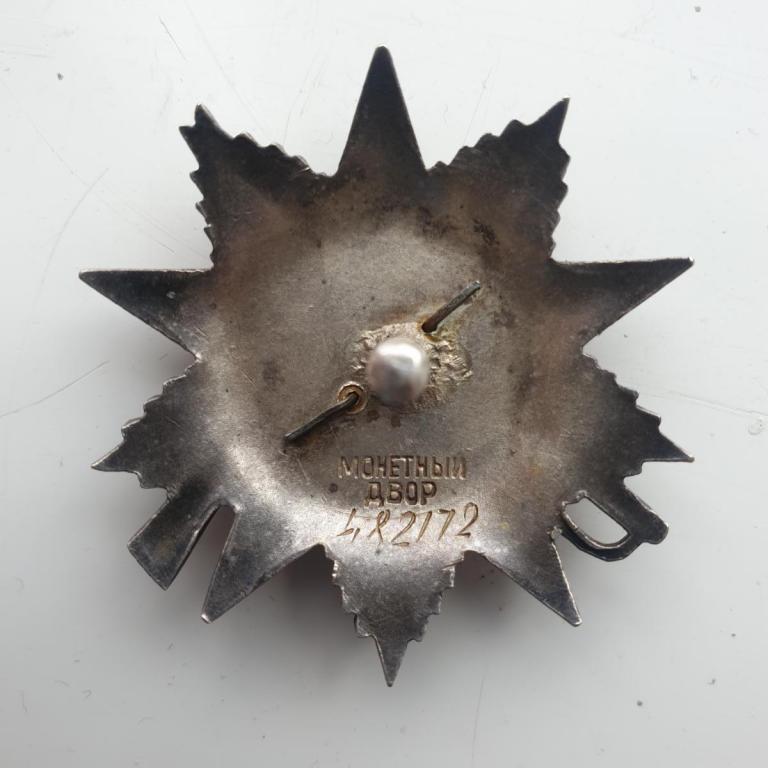
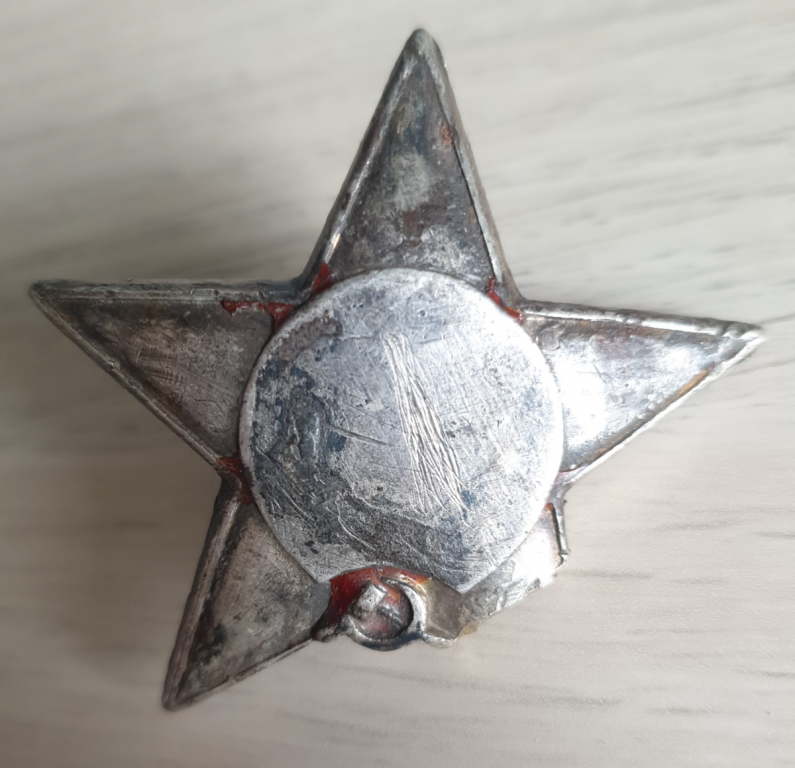
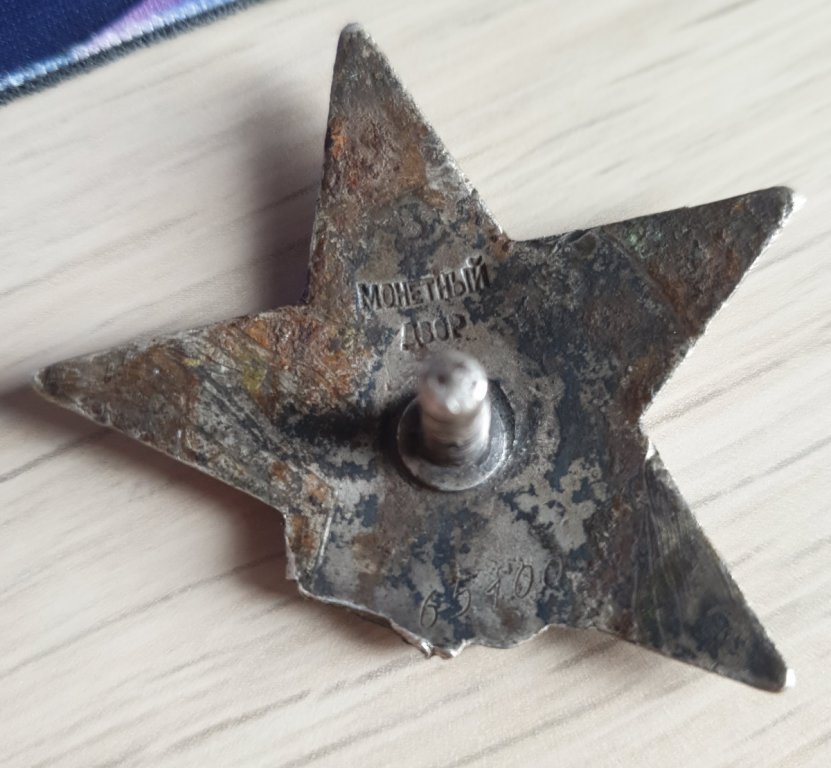
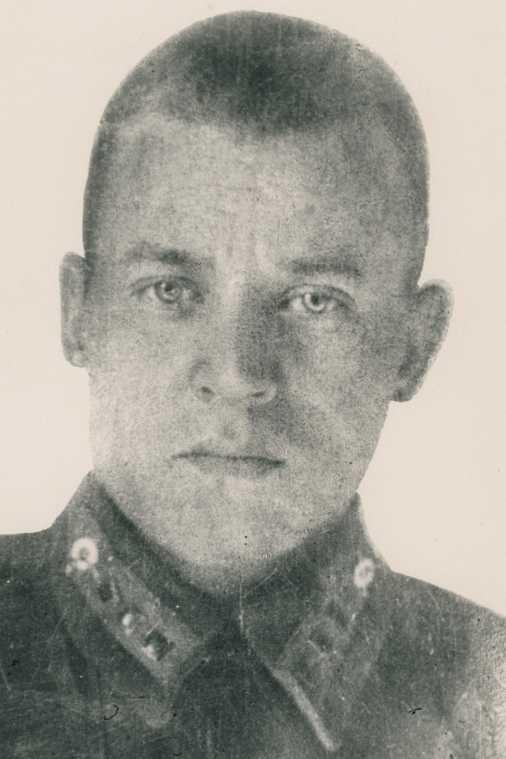
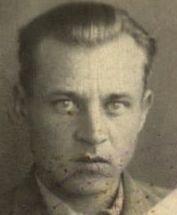
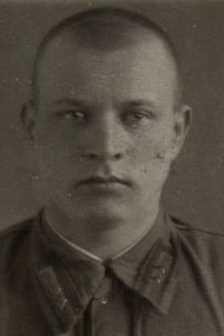

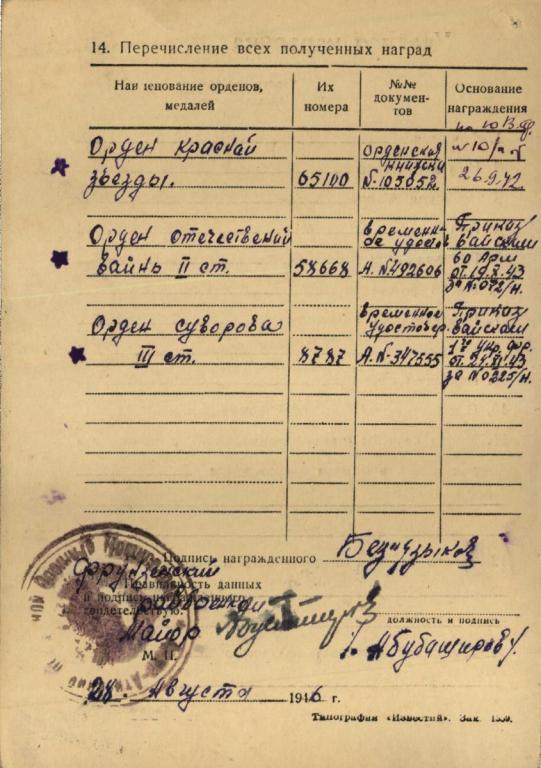
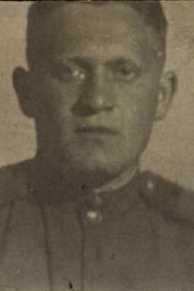
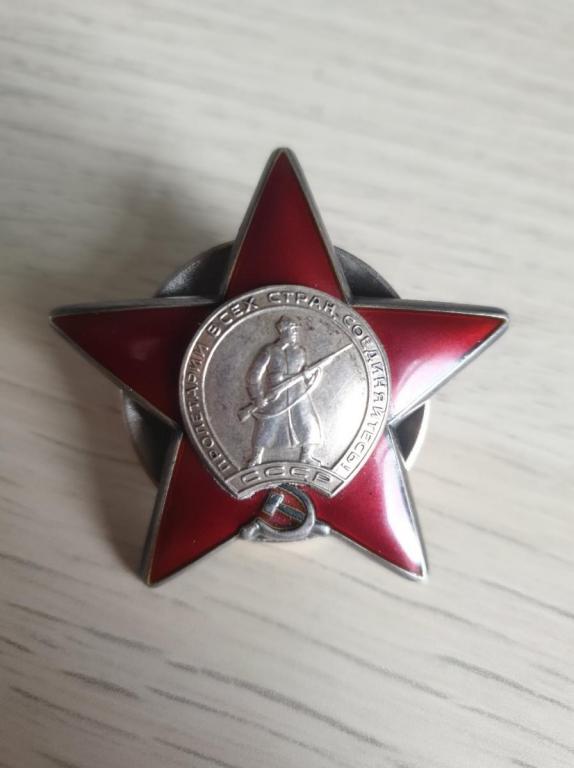




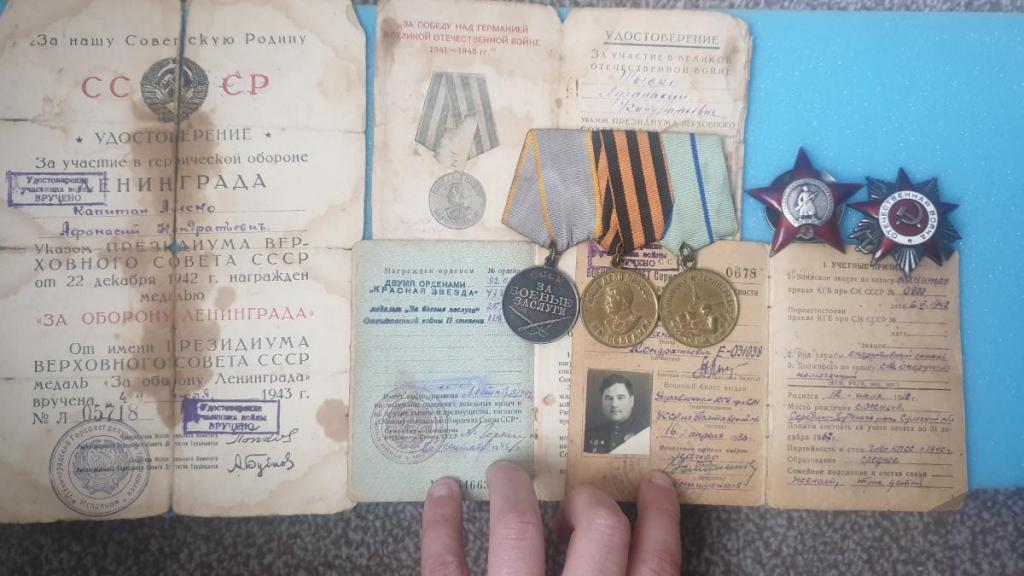
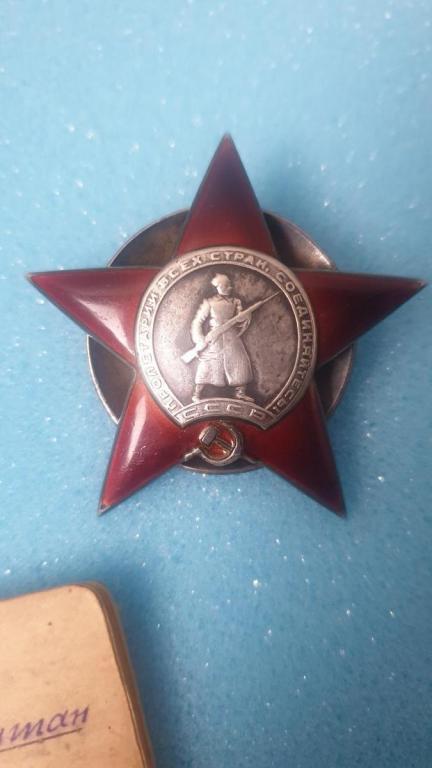
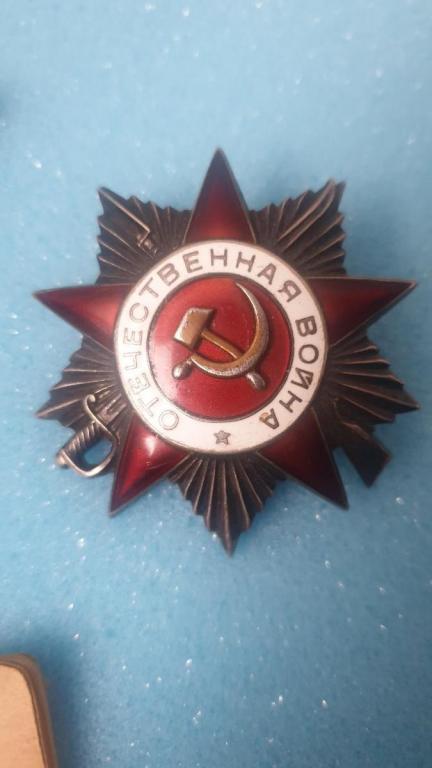
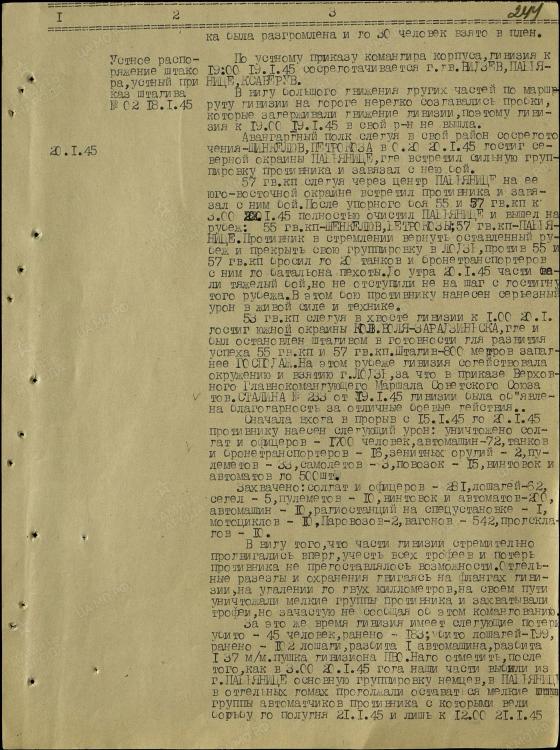
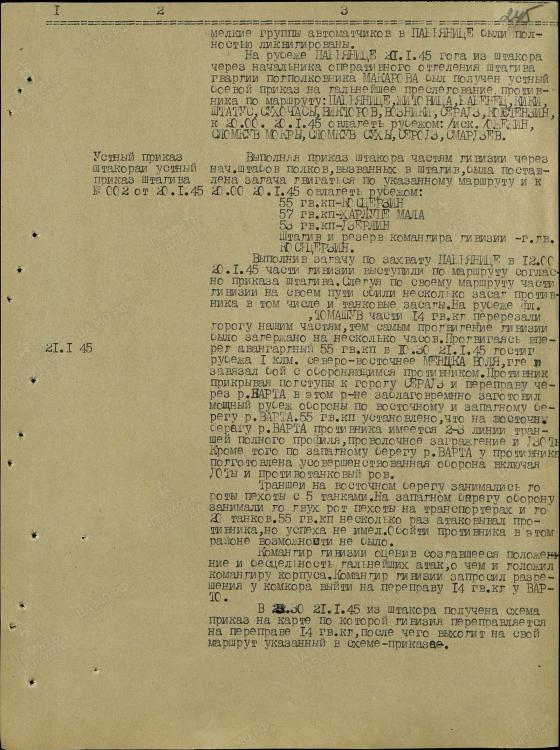
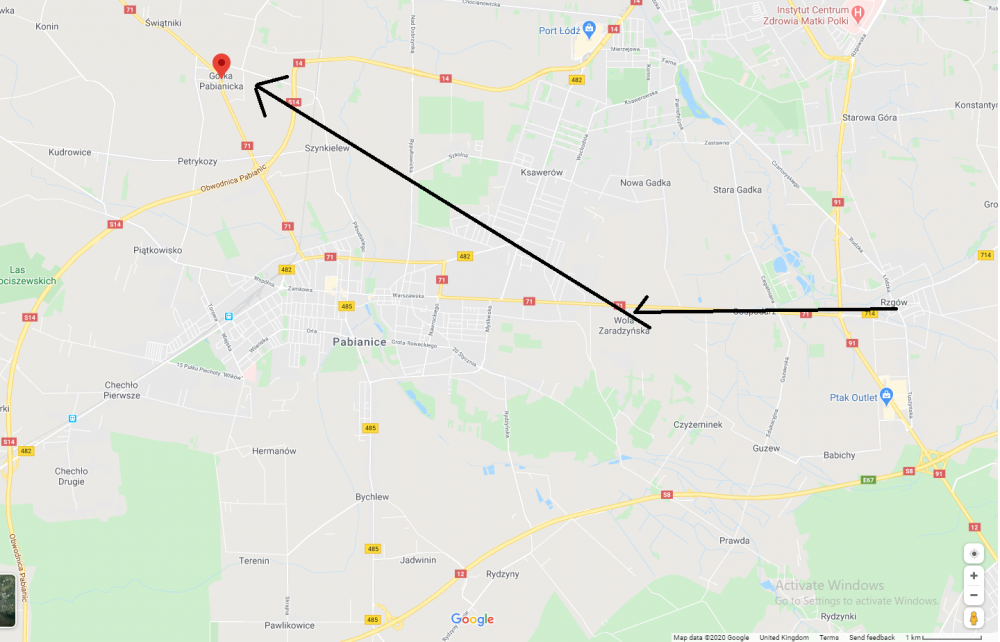
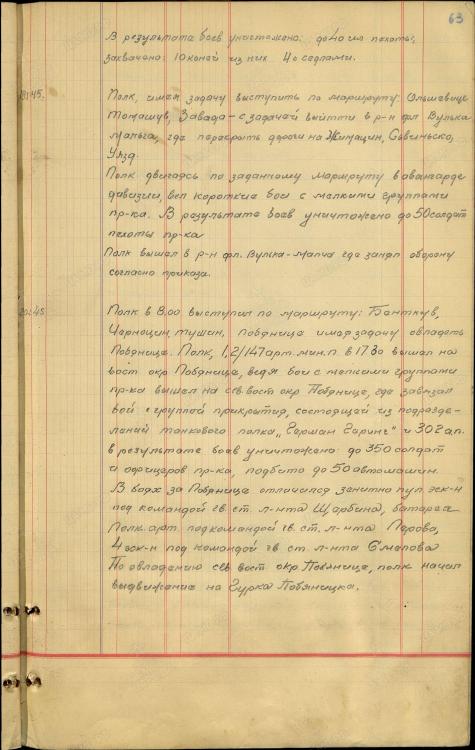
.thumb.jpg.1d8820c0bc2356766c5bb26c3137e11a.jpg)
